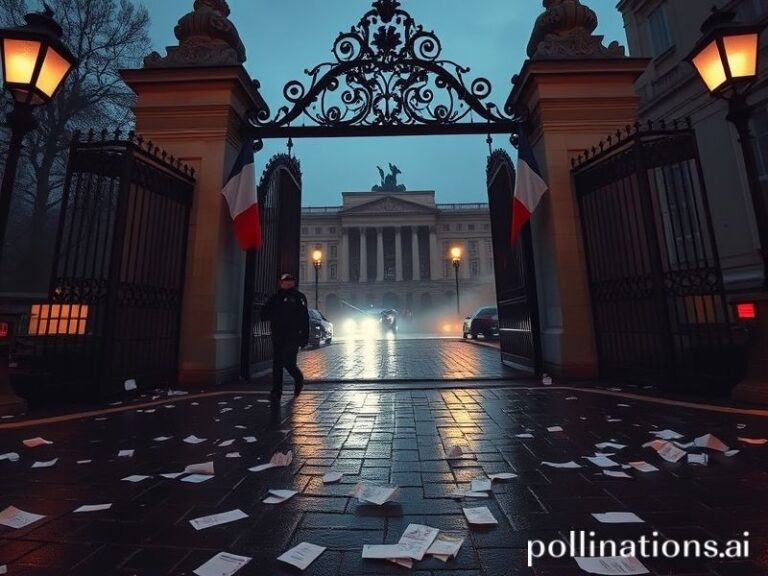Nepal’s Gen Z Uprising: How TikTok and Tear Gas Are Rewriting Himalayan Politics
Kathmandu’s air this week tastes of tear gas and generational disappointment, a pairing that vintners of global unrest will recognize from Beirut to Bogotá. While the rest of the planet binge-watched AI launch events and congratulated itself on surviving another quarterly earnings cycle, Gen Z in Nepal decided that waiting politely for the future was a luxury they couldn’t afford. So they took to the streets, armed with smartphones sharper than khukuris and slogans borrowed from everywhere and nowhere, demanding an end to the VIP convoys that turn the capital’s Ring Road into a private driveway for ministers who still think governance is a hereditary perk.
The trigger was the usual bureaucratic insult: a bus-versus-government-SUV collision that killed four students and injured dozens, followed by the customary disappearing act by the driver—rumored, naturally, to be the nephew of someone whose signature is worth more than the national budget. Within hours, TikTok feeds filled with vertical videos of teenagers dismantling police barricades like IKEA furniture, soundtracked by K-Pop and rage. The hashtag #NoMoreBloodRoads trended worldwide, sandwiched between clips of cats knocking over wineglasses and ads for crypto credit cards. The algorithm, ever democratic, couldn’t decide which outrage deserved more pixels.
Global implications? Start with the obvious: Nepal sits squarely between two nuclear frenemies who treat the Himalayas as a geopolitical seesaw. When 30 percent of Kathmandu’s under-25s simultaneously decide the state is illegitimate, Beijing notices, Delhi notices, and Washington—busy auctioning off its own democracy—pretends to notice while secretly Googling “Nepal map.” Supply chains for the world’s favorite puffer jackets and meditation apps wobble because the only road to China’s TikTok-famous base camps now features flaming tires instead of prayer flags. Somewhere in a Davos side-room, a consultant adds “Nepal Instability Risk” to a PowerPoint slide between “Climate Anxiety” and “Gen Z Brand Loyalty Collapse.”
The protests also offer a master class in post-national rebellion. These kids borrow tactics from Chile’s estallido social, chant slogans in Nepali-English-Korean mash-ups, and crowdfund gas masks via Instagram stickers. Their parents, veterans of the 2006 democracy movement, watch in horror as their offspring reject party politics altogether, preferring leaderless swarms that evaporate before the riot police can kettle anyone. It’s democracy without the branding—Occupy, but make it Himalayan.
Meanwhile, the international commentariat performs its usual circus. Western NGOs tweet solidarity in pastel hex codes, then immediately pivot to fundraising emails. Indian television declares the unrest a foreign conspiracy, which is half true if you count Korean pop culture as foreign. China’s embassy issues a statement about “non-interference” while quietly briefing reporters that Belt-and-Road loans are contingent on “youth stability,” a euphemism so silky it could be worn to a state banquet.
And what of the protesters themselves? They’ve discovered the exquisite futility of demanding accountability from a government whose previous fiscal plan included “pray for monsoon tourism.” Their phones glow with VPNs and sarcasm; one viral image shows a teenager holding a sign that reads, “We’re not anti-national, just pro-survival.” Dark humor, after all, is what’s left when hope is rationed like fuel during an Indian blockade.
By Friday, the curfew sirens competed with temple bells, a duet for late capitalism. The finance minister, cornered by reporters, promised a commission—because nothing dissolves anger faster than stationery with a letterhead. The kids responded by projecting the commission’s future report onto a crumbling palace wall: 400 pages, zero convictions, and a budget line for “youth engagement via metaverse monastery.”
In the end, the protests will likely fade into the capital’s perpetual haze, another entry in the global ledger of almost-revolutions. But the scent of burnt rubber lingers longer than policy papers. Somewhere in a dorm room, a 19-year-old is editing footage for Netflix’s next true-crime docuseries, wondering if the algorithm will remember her friends’ names or just the color of their bandanas. The world, distracted by newer outrages, will scroll on—until the next convoy hits the next bus, and the Himalayan cycle resets. History doesn’t repeat itself; it just changes its ringtone.







